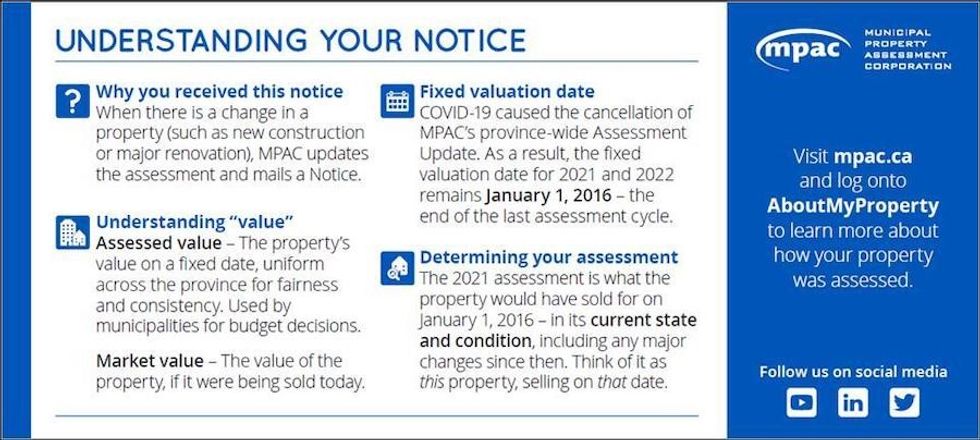In a lucky break, Ontario homeowners are paying property taxes based on the value of their property in 2016.
At the onset of the COVID-19 pandemic, Ontario announced that its MPAC assessments would be been postponed until 2021. In better times, they are supposed to occur every four years. For those in the dark, MPAC, or the Municipal Property Assessment Corporation, is the non-profit responsible for assessing the value of homes throughout Ontario.
The corporation conveys their values to local governments so that each municipality can in turn determine the amount of property tax owed by homeowners.
With the postponement of the 2020 Assessment Update, 2021 and 2022 property taxes for all Ontario homeowners will be calculated based on their 2016 property assessment. Meaning -- especially in red-hot real estate markets like the Greater Toronto Area (GTA) and Hamilton, where home prices have soared to record-breaking highs -- homeowners are paying a lot less than they will be a few years from now.
Notably, Toronto actually raised its property taxes in 2020. Of course, now more so than ever, the pandemic-ravished city needs all the tax dollars it can get as we (finally) begin the recovery process.
This year -- in no uncertain terms -- MPAC is encouraging a better understanding of the property assessments, thanks to a plain-language insert card that explains property values for 2021 and 2022.
In a move that started in the spring, the notices -- which are sent to any property owner whose property has changed, such as new ownership or structures being added, removed. or renovated -- include the specially designed insert card. The plain-language insert, which was included with more than 38,000 notices distributed in May, explains why the property owner is receiving the notice, along with details about the valuation process.
“It’s important for property owners to understand their assessments, which are vital inputs into municipal decisions,” says Carmelo Lipsi, MPAC Vice President and Chief Operating Officer. “Especially since the COVID-19 pandemic disrupted MPAC’s regular assessment cycle, we feel now is a good time to clarify how property values are determined.”
The insert notes that MPAC’s property assessments are based on a fixed valuation date, uniform across the province. The fixed date -- January 1, 2016 -- ensures consistency and fairness for every community, with all municipalities starting at the same point for budget decisions like property tax rates.
“The assessed value ensures a level playing field, with all municipalities working from the same baseline,” Lipsi explains. “This is different from market value – the selling price for a property today – which is impacted by ongoing marketplace fluctuations. Assessed value, determined on a fixed date, provides a stable input specifically for municipal budget decisions.”
When determining the assessed value, MPAC considers what a property, in its current state, would have sold for on the fixed date. If upgrades to the property (such as adding a swimming pool or a major renovation) have been made since then, those upgrades are taken into account as if they had been in place on January 1, 2016.
Municipal decisions on 2021 and 2022 property tax rates will be based on this data. Assessments are being updated, and property assessment notices sent, for properties that have changed. Otherwise, a property’s previous assessed value will continue to apply.
“Our priority at all times is getting the assessment right,” Lipsi says. “If a property owner believes the assessment is not accurate, MPAC will review it free of charge.”






















